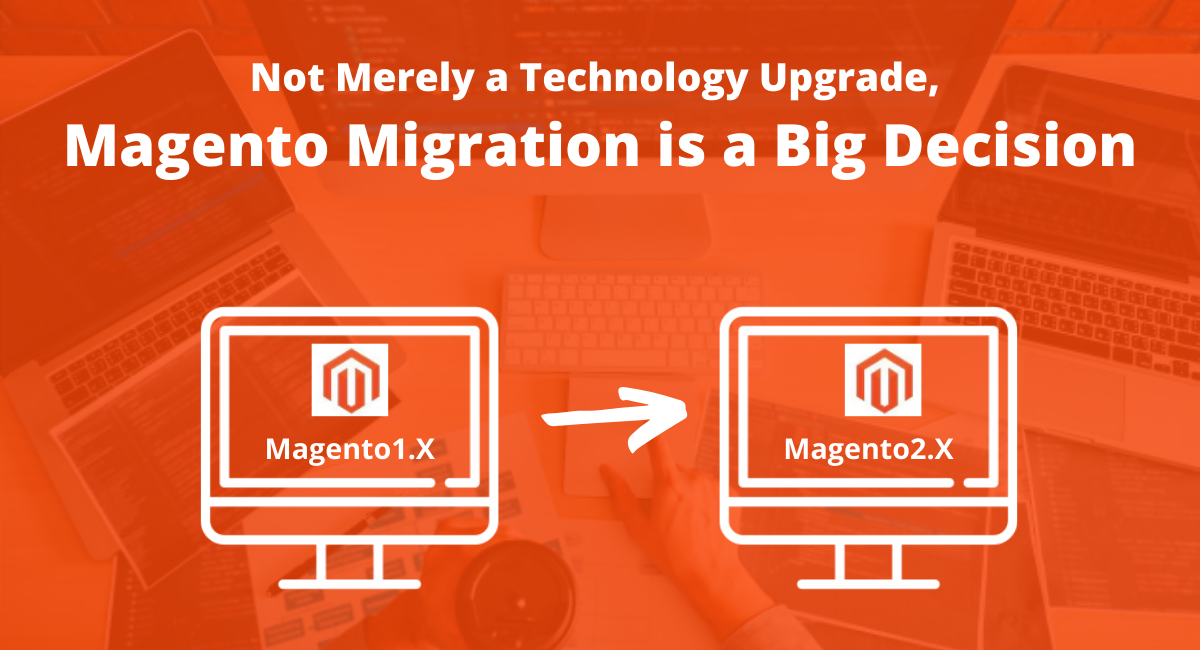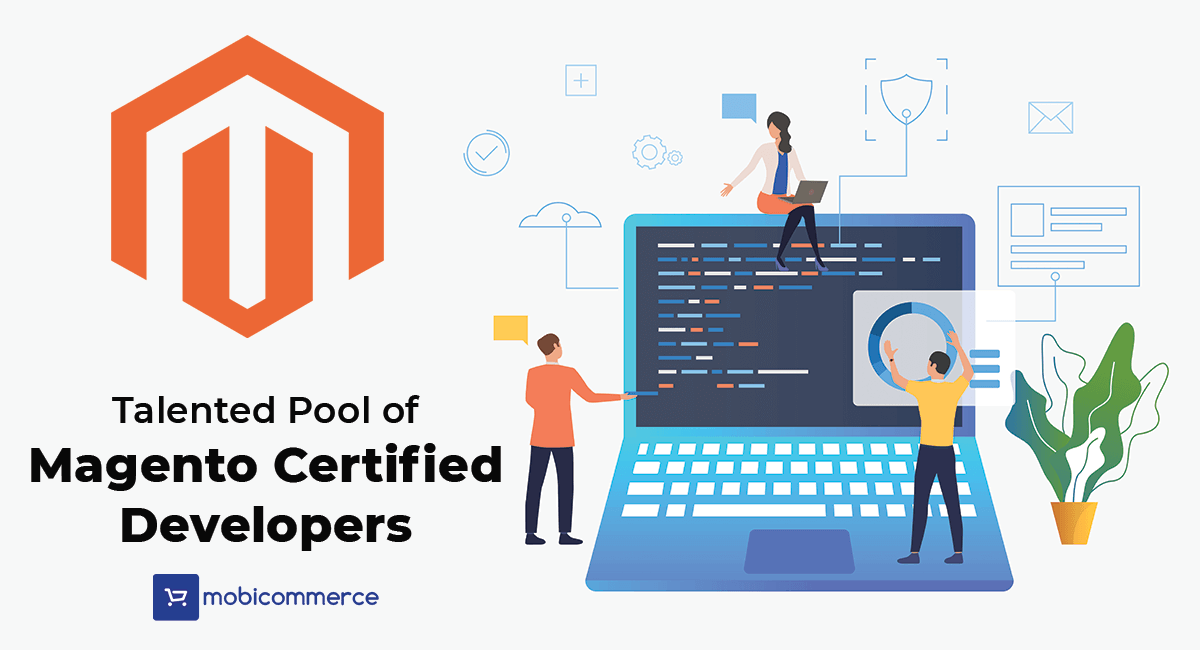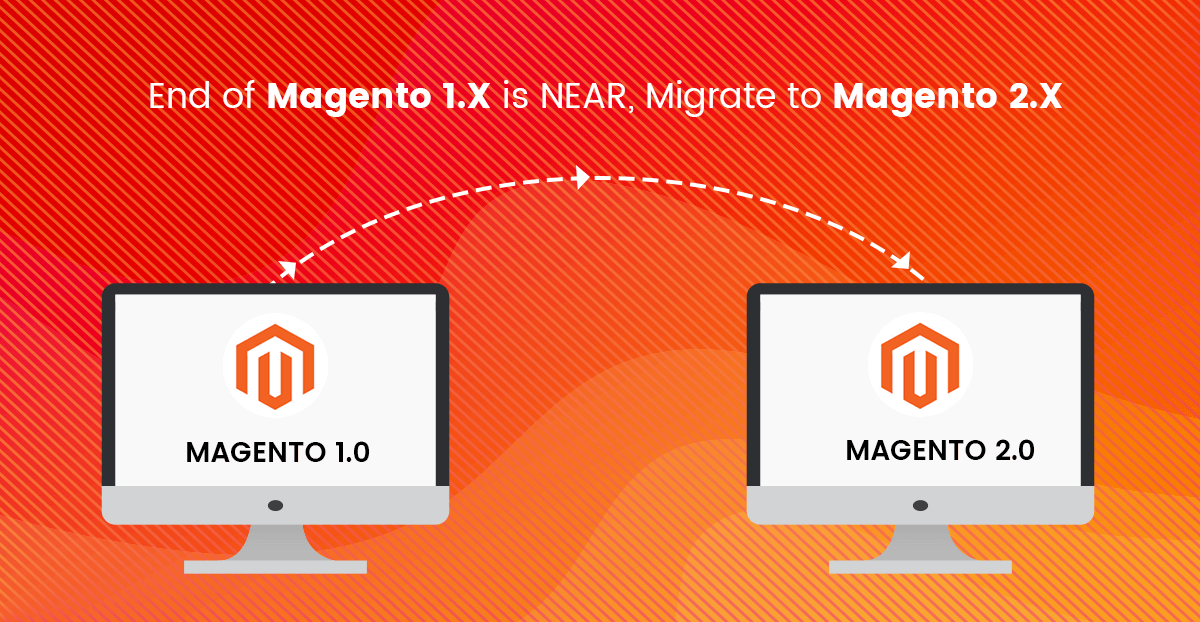Magento 1 is nearing its end, and what’s your plan to go down with it or to migrate with all that you have?
When we say Magento 2, it is not some technical update that you have to do to your Magento eCommerce store, in fact, it is a migration you have to make to keep your online business continue running and selling.
Magento and eCommerce
Magento is like made for eCommerce. It has already proved its worth in its first version, and now with its next, it surely has something more for eCommerce store owners.
The reputation of Magento as an eCommerce platform is outstanding since its release.
Today, with over 250,000 live stores running on Magento, it has become the top-rated platform, which is used by 18% of the top million websites.
There’s no doubt about it that Magento 1 was doing good, but progress doesn’t standstill. Change and up-gradation is the rule of nature and is necessary to improve things. Hence, Magento 2. It is true that migration is not an easy job. Migration to Magento 2 means a lot of rework from scratch but in the interests of security and performance, and to take advantage of other benefits that come with migrating to Magento 2, including revenue growth, increased site conversion, and increased site traffic, you got to take the step.
The news of Magento nearing end came like a shock, and almost by June 2020, Magento 1 will vanish from our life. Hence, there would be no option left but to migrate. The clock is ticking, and still, many are fearing to migrate from one to two. Here’s why.
Fear of customer loss Nothing will be lost if you execute a properly planned migration. We understand your store might be having a good customer base with a lot of them registered to your store, and the fear of losing their login details, purchase history, preferences, etc. can be scary. Well, it is not like that. You can take everything from your old site to the new one, along with your loyal customers.
Fear of losing the rank SEO traffic or Google ranking loss is no less than a nightmare for any website owner. Yes, Magento 2 is very SEO friendly, but why take a risk? Ensure that you have followed SEO best practices for site migration to avoid crying over the spilled milk later. Also, don’t forget to perform the baseline checks and know the traffic levels. Consider your keyword ranking positions and the pages on the current site that have the highest traffic and revenue. Implement 301 redirects to crawl through your website only if you are planning to change the URL structure. Avoid migrating unnecessary extensions as they can cause dramatic effects on the site. Don’t worry about the extensions as Magento 2 has a lot of new extensions and add ons which you can benefit from.
Fear of data loss Of course, data is everything for a website. Even a minor data loss can cost big for eCommerce store owners, hence many steps back majorly fearing data loss during the migration. Before you start, generate a full backup of your existing Magento 1 store, including your database and all the files and folders on your server. It is essential to migrate the customer data along with technology and extension upgrade as it will save you from losing the old clients. Next, create a clone of your Magento 1 store using the backup for migration while your live site continues to function as usual in the background. Remove the unwanted and add the necessaries and then install the latest version of Magento 2 on the same server as your Magento 1 installation.
Now coming to the point, why there is a need to migrate?
It is right to question “Why to migrate to Magento 2.X” since migration is no joke. Well, the main reason is that there is no option left but to migrate, but there are numerous benefits as well, which are enough to prep up for the journey.
-
- Improved Performance – With the modern digital framework, Magento 2 works faster than the previous Magento first edition and comes with additional bug testing options that will enhance the performance of your site.
-
- Fast Load Times – Pages in Magento 2 load up to 50% faster, can handle up to 39% more orders per hour, offers 66% faster add-to-cart times, and can process 10m page views per hour versus 200k for Magento.
-
- Attractive UI Design – The new admin interface is more user-friendly than that of its previous generation. It provides more straightforward navigation and many custom features like drag and drops or selecting/de-selecting columns in seconds.
-
- Easier Maintenance and Upgrade – Installation, upgradation, and maintenance of extension in Magento 2 has been made a lot easier than the previous one. Even different extensions can now co-exist in Magento without conflicting each other, which used to be a major issue on the 1.x platform.
- Streamlined Checkout Process – Forget the tiring six steps long checkout process of Magento 1, its latest version allows customers to checkout in just two simple steps that too without even registration. Magento 2 identifies the customer base based on its email address and makes it possible for new users to register after checkout. The Instant Purchase feature of Magento 2 offers a faster checkout experience by using previously-stored payment credentials and shipping information to skip checkout steps altogether, taking them to a confirmation purchase page.
Complete migration or just a system upgrade?
Of course, migration as a system upgrade will not give you all that you need for your business running hale and hearty. In a way, migration to Magento 2 from 1 can be called a system upgrade as Magento 1 to 2 migration is essentially a re-build or a re-platforming project. Much of the functionality remains, but there are many new features and a redesigned admin panel, which means Magento 2 is very different from Magento 1. Hence a lot of custom work on your site will need to be reproduced for the new store. So yes, you are going to need to re-build your website from scratch. But fear not, as Magento 2 will not disappoint you in any way.
So, your decision should be to migrate your entire business rather than just a system upgrade, or else, you might need to start from scratch.
Recommended Blog Migrate Magento 2 and upgrade your store
Final Thoughts
Choosing to re-platform or merely upgrading to Magento2 is a decision you must take; however, migration is the best and right thing to do since Magento 1 has its days numbered. Since still, you have got time, you must not waste a single second and start planning for your migration right now as the sooner is, the better. Holding on to Magento 1 is useless as pretty soon it will become dangerously outdated with no official support and updates. In short, migrate as quickly as possible as Magento 2 is the future.
Approach MobiCommerce for your complete Magento 2 migration service and stay rest assured.










